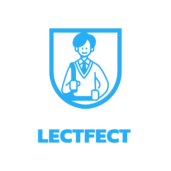Exploring the various types of technology available can provide educators with valuable insights into how to create dynamic and interactive learning environments. Whether it’s virtual reality simulations for immersive experiences or educational apps for personalized learning, the possibilities are endless. By staying informed about the latest trends in educational technology, educators can harness the power of these tools to inspire and empower their students in new and exciting ways.
Types Of Educational Technology
From Chalkboards to Smartboards
 Educational technology has evolved significantly over the years, transitioning from traditional chalkboards to modern smartboards. While chalkboards served as the primary tool for teaching in the past, smartboards offer interactive features that engage students in a more dynamic learning experience. With touch-screen capabilities and multimedia integration, smartboards allow educators to create visually stimulating lessons that cater to diverse learning styles. Educators and content creators now have various options for AI picture creator tools, enabling them to generate engaging visuals that enhance learning experiences and boost student engagement.
Educational technology has evolved significantly over the years, transitioning from traditional chalkboards to modern smartboards. While chalkboards served as the primary tool for teaching in the past, smartboards offer interactive features that engage students in a more dynamic learning experience. With touch-screen capabilities and multimedia integration, smartboards allow educators to create visually stimulating lessons that cater to diverse learning styles. Educators and content creators now have various options for AI picture creator tools, enabling them to generate engaging visuals that enhance learning experiences and boost student engagement.
The Rise of E-Learning Platforms
E-learning platforms have revolutionized the way students access educational content. These online platforms provide a wide range of resources, including video lectures, interactive quizzes, and discussion forums, enabling students to learn at their own pace. With the flexibility of accessing materials anytime and anywhere, e-learning platforms offer a personalized learning experience that adapts to individual student needs.
Learning Management Systems (LMS)
Learning Management Systems (LMS) are online platforms that allow educators to organize educational content, administer assessments, track student progress, and facilitate communication. They streamline the learning process by centralizing resources, assignments, and grades in one accessible location. Common features of LMS include discussion forums, quizzes, and file sharing capabilities, enhancing collaboration and engagement among students and teachers. Popular LMS options include Moodle, Canvas, and Blackboard.
Student Response Systems (SRS)
 Student Response Systems (SRS), also known as clickers, are interactive tools that enable real-time student-teacher interaction during lessons. These systems allow students to respond to questions posed by educators using handheld devices or software applications. SRS promotes active participation, immediate feedback, and data-driven decision-making in the classroom. By incorporating SRS in educational settings, instructors can adapt teaching strategies based on student responses, fostering a more interactive and engaging learning environment.
Student Response Systems (SRS), also known as clickers, are interactive tools that enable real-time student-teacher interaction during lessons. These systems allow students to respond to questions posed by educators using handheld devices or software applications. SRS promotes active participation, immediate feedback, and data-driven decision-making in the classroom. By incorporating SRS in educational settings, instructors can adapt teaching strategies based on student responses, fostering a more interactive and engaging learning environment.
Interactive Whiteboards and Tablets
Interactive Whiteboards and Tablets are digital devices that enhance traditional teaching methods by allowing educators to display multimedia content, annotate presentations, and create interactive lessons. These technologies facilitate dynamic and visual learning experiences, catering to diverse learning styles. Interactive whiteboards enable real-time collaboration, while tablets offer mobility and personalized learning opportunities. By integrating these tools into the classroom, educators can increase student engagement, promote creativity, and improve information retention through interactive and immersive learning activities.
Impact of Educational Technology on Learning
Enhancements in Engagement and Interaction
 Educational technology has significantly enhanced engagement and interaction in the learning environment. With tools like Learning Management Systems (LMS) and Student Response Systems (SRS), educators can create interactive lessons that captivate students’ attention. For instance, LMS platforms allow teachers to upload educational resources, assign tasks, and create discussion forums, fostering collaboration among students. SRS tools enable real-time interaction through quizzes and polls, encouraging active participation and providing immediate feedback to enhance learning outcomes.
Educational technology has significantly enhanced engagement and interaction in the learning environment. With tools like Learning Management Systems (LMS) and Student Response Systems (SRS), educators can create interactive lessons that captivate students’ attention. For instance, LMS platforms allow teachers to upload educational resources, assign tasks, and create discussion forums, fostering collaboration among students. SRS tools enable real-time interaction through quizzes and polls, encouraging active participation and providing immediate feedback to enhance learning outcomes.
Personalization of Learning Experiences
One of the key benefits of educational technology is its ability to personalize learning experiences. Through adaptive learning algorithms and data analytics, platforms can tailor educational content to meet students’ individual needs and learning styles. For example, interactive whiteboards and tablets offer visual and interactive lessons that cater to diverse learning preferences. By personalizing learning experiences, educators can ensure that each student receives the support and resources necessary to maximize their learning potential.
The Future of Educational Technology
Educational technology continues to revolutionize the way students learn, offering interactive tools and personalized experiences. With the rise of Learning Management Systems (LMS) and Student Response Systems (SRS), educators can create dynamic learning environments that foster collaboration and provide instant feedback. By integrating interactive lessons and real-time quizzes, educational technology promotes engagement and interaction, making learning more enjoyable and effective. The use of adaptive algorithms and interactive tools like whiteboards and tablets further enhances the learning experience, catering to diverse learning styles. As educational technology advances, students can expect tailored support and optimized learning outcomes for a brighter future in education.

